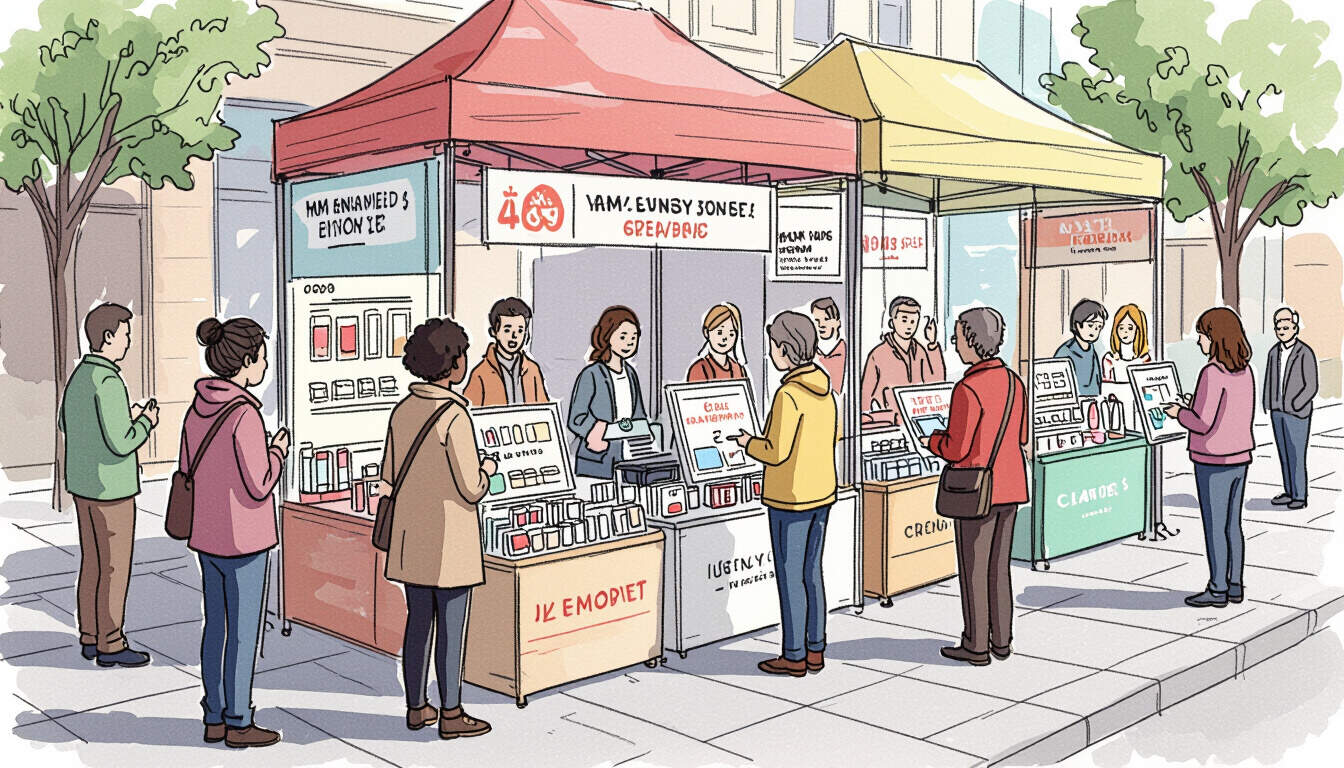Guerrilla Demos: Fresh Strategies for Small Businesses
 by Verner Mayer
by Verner Mayer
Discover how small businesses can use guerrilla demos to build buzz and connect with niche audiences. This approach offers creative, low-cost ways to stand out, drive engagement, and foster brand loyalty through hands-on experiences.

Small businesses often seek ways to make an impact without large budgets. Guerrilla demos provide a dynamic solution by turning everyday spaces into opportunities for direct interaction. These tactics involve staging spontaneous events that showcase products or services in unexpected settings.
Guerrilla demos can transform a simple product display into a memorable experience. For instance, a local coffee shop might set up a pop-up tasting station in a park, drawing in passersby with samples and stories about their beans. This method helps create immediate connections and generates word-of-mouth buzz.
One effective strategy is to focus on niche markets where customers have specific interests. Guerrilla demos allow businesses to target these groups by choosing locations that align with their passions. A artisan soap maker could demonstrate their products at a community farmers' market, engaging people who value natural ingredients.
Planning a demo starts with identifying key goals. Businesses should consider what message they want to convey and how to make it resonate. Using props and interactive elements can enhance appeal, making the event more engaging for participants.
Key Benefits of Guerrilla Demos
- They offer high visibility at low cost, ideal for startups.
- These events encourage direct feedback, helping refine offerings.
- They build community ties, fostering long-term loyalty.
In practice, timing is crucial. Choose moments when potential customers are most active, such as weekends or events. A bookshop might host a quick reading session outside a library, attracting book lovers and sparking conversations.
Another approach involves partnering with complementary businesses. Small businesses can collaborate on joint demos to expand reach. For example, a fitness gear seller and a health food vendor could team up for a outdoor workout demo, combining products to create a holistic experience.
Challenges may arise, such as weather or permissions, so flexibility is key. Businesses should prepare backup plans to ensure the demo goes smoothly. Documenting the event through photos or videos can extend its impact, providing content for social media.
Success stories highlight the potential. Consider a craft brewery that set up tasting demos in local neighborhoods. By involving community members in the process, they not only increased sales but also created a loyal following. Such tactics show how innovation can lead to growth.
To measure results, track metrics like attendance, social shares, and follow-up sales. This data helps refine future efforts, making each demo more effective.
Implementing Guerrilla Demos Step by Step
- Research your audience: Identify where they gather and what excites them.
- Develop a theme: Create a cohesive story around your product to draw people in.
- Gather essentials: Prepare materials that are portable and eye-catching.
- Execute and engage: Interact personally, answering questions and gathering feedback.
- Follow up: Connect with participants afterward to build relationships.
Bringing creativity into play can set a demo apart. Use humor or surprises to keep things lively, ensuring the event stands out in a crowded market.
For entrepreneurs, these tactics offer a way to compete with larger brands. By focusing on authenticity, niche markets can be won through genuine interactions. A handmade jewelry maker might demonstrate crafting techniques at a craft fair, allowing visitors to try it themselves and feel involved.
Over time, consistent demos can build a brand's reputation. They encourage repeat visits and referrals, forming the backbone of organic growth. Businesses that innovate in this area often see sustained benefits.
In summary, guerrilla demos provide a practical path for small businesses to thrive. By embracing these strategies, owners can create engaging experiences that resonate and drive results.
